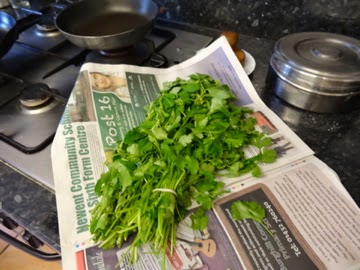1) ランダフ大聖堂 / Llandaff Cathedral
2) 外側 / Outside
3)
内部 /
Inside
4)
周囲 /
Surroundings
5)
ウェールズ魂とケルト魂
/ Welsh
Spirit and Celtic Spirit
1) ランダフ大聖堂 / Llandaff Cathedral
 |
| タイルの地図 / Map of Tiles |
Sの弟さんがRの車の手配をしている間に、私達はSとともにちょっと観光に出かけました。
私はカーディフには複数回来ていますし、Rにいたっては、数えきれないほど訪れています。
この大聖堂は 'イングランド国教会 / Church of England' : ★ (公式Web: 英語)の系統の'聖公会/ Anglicanism'に属しています。
カーディフには、2つの大聖堂があり、ひとつがランダフ大聖堂、もうひとつが、
メトロポリタン大聖堂 / Metoropolitan Cathedral Church of St David
(もしくは聖デビット大聖堂/ St David's Cathedral ) : ★ (公式Web; 英語)で、
そちらはカソリック教会の傘下です。
ランダフ大聖堂の地は英国の中で最も古いキリスト教会の場所で、6世紀に設立されています。
[ノルマン様式建築はノルマン風建築、アングロ・ノルマン建築などとも呼ばれ、ロマネスク建築に属する建築様式に分類され、11世紀に起こったノルマン人のイングランド王国占領ころから発達した建築様式なのでそう呼ばれている。通常巨大で単純な石造りで、外部の装飾は少なく、重厚さを感じさせる。 [1] [2]
イングランドの多くの大聖堂、修道院、その他建築物は初めこの様式に則って建てられ、いくつかは今もそのまま残り、もともとのフランス北部でもこの様式の建物があり、ノルマン人が進出したイタリア南部でもこの様式が採用された例があり、また日本でも近代になってこれに習って建てられた教会堂もある。]
その後、戦争や風雪などで損壊を受け、それをまた修復して現在の形になっています。
私は建築に詳しくないので、わかりませんが、いろいろな様式が混じっている面白い大聖堂だということです。
その違いがよくわからないながらも、そこにはいろいろなアート作品があり、楽しめました。
Llandaff Cathedral
While S's brother arranged with R's car, we have a little sightseeing with S.
I came to Cardiff a few times and R visited many times, however, for us both this was our first visit to 'Llandaff Cathedral' : official web; ★.
The Cathedral is Anglican.
There are two Cathedrals in Cardiff, this one and the other is the 'Metoropolitan Cathedral Church of St David's (St David's Cathedral)' which is Roman Catholic: official web: ★
'Llandaff Cathedral' stands on one of the oldest Christian sites in Britain which was established in the 6th century.
Originally built in the 12th century in Norman style, it has been damaged by wars and weather and later been repaired.
I do not know very much about architecture, although they say this is an interesting cathedral because it now has a mixture of many styles.
Even though I do not understand the differences, there are many art works,
so I enjoyed the visit.
2) 外側 / Outside
 |
| 遺跡の窓から大聖堂を見る From the window of the ruin to the Cathedral |
 |
| 南側の入り口から向かいました。 この左側に遺跡があります。 We were go in there from the south entrance. The left of this view is the ruin.  ゲートの上には小さなケルティック十字 Small Celtic Cross on the Gate |
 |
| 階段からの景色 右の小さな屋根の部分の "チャプターハウス / Chapter House" は、 13世紀に作られました。 この "チャプターハウス" には、12世紀建設の大聖堂よりも古い ケルティック十字 (拡大写真:★)があります。 チャプターハウスは、聖職者の会議室です。 The View from the Steps "Chapter House": on the right with a small roof. It was built in the 13th century. The Celtic Cross (Larger photograph :★) in the "Chapter House" is older than the 12th century cathedral. |
 |
| 塔/ Tower |
 |
| ガーゴイル/ Gargoyles 日本の鬼瓦や沖縄(琉球神道) のシーサーのような役割かな? ただし、ガーゴイルは雨樋の役目もしています。 私はガーゴイルが大好き! Gargoyles I love gargoyles! They works as Onigawara in Japan or Shisa in Okinawa (Ryukyuan religion) ? But Gargoyles works as gutters too.    |
3) 内部 / Inside
 |
| 室内図 内部の写真はフラッシュを用いていないので、殆どがぼけぼけです。 Map Inside The photographs were taken without a flash, so most do not have focus. |
身廊 / Nave
 |
| 現在の身廊 キリスト像は ジェイコブ•エプスティン/ Jacob Epstein (1880 - 1959)の作品 エプスティンの他の作品には オスカー•ワイルド (1854 - 1900)の 墓碑:★があります(1912)。 この墓碑に関してのちょっと面白い記事:★ This is the current nave. The Statue of Christ is by Jacob Epstein (1880 - 1959) Epstein also carved Oscar Wilde's tombstone (1912) :★ |
 |
ランダルフ大聖堂身廊部分の遺跡
The nave of the ruined Llandaff Cathedral画像とコメントは下記より/ This picture and the comment from below. Wikipedia about the Cathedral |
 |
| 西の入り口 入ると身廊 (上の写真) です。 右側にダンテ • ゲイブリエル • ロセッティ(1828 - 1882)が 描いた祭壇画: "The Seed of David"(1858-64)→★(画像) があります。 West Door The door leads into the nave. (Above Photo) To the right of the entrance is an altarpiece: "The Seed of David"(1858-64)→★(picture) by Dante Gabriel Rossetti(1828 - 1882) |
If you say Rossetti, I immediately think of the painting below: "Proserpina"(1874).
 |
| テイト • ギャラリー 所有/ Tate Gallery :★ 画像は下記より / This from below Wikipedia about "Proserpina" |
 |
| たくさんの旗が飾られています。 ライト(シャンデリア?)がモダンでちょと驚きました。 Many flags are displayed. I was a little surprised by the modern lights (chandeliers). |
Lady Chapel
 "Lady Chapel" built in 1280. 上のステンドグラス: Above Stained Glass Work: "The Supper at Emmaus"(1959) by designer: John Piper (1903 - 1992 ) artist : Patrick Reyntiens (1925 -) |
 |
| East wall of "Lady Chapel" Stained Glass : "Tree of Jesse" (1951) by George Webb (1879 -1954) |
 |
| きれいな装飾の壁と天井 Beautiful Walls and Ceiling  |
 |
| "Flowers of the Virgin Mary" (1964) By Frank Roper (1914 -2000) あるべきところにある作品というべきか、 この場所にあう作品というべきか.... I say the work should be here, or the work suits this place? ...  右側 / Right Side  左側 / Left Side |
"聖テイロ / St Teilo"
 |
| 修復前に使用されていた装飾 Keeping some of the decoration from before restoration. |
 |
| 6世紀創設者の一人、聖テイロ(約500 -560頃)の伝説 木彫りのレリーフとカリグラフィが気に入って撮影しました。 聖テイロが雄鹿に乗っているのは、 彼のいくつかあるひとつの伝説から来ています。 'ブルターニュ地方の地主が聖テイロに日の出から日没までに取り囲んだ土地を譲渡すると申し出たとき、彼は雄鹿に乗り、できる限り回ったのでした。:★(英語)' Legend of St Teilo (c.500 - c.560) who was one of founders in the 6th century. I like the wood relief and the calligraphy, so I took the photographs. Why St Teilo rides on a stag, because it came from one of his legends. 'When a local lord in Brittany offered him all the land he could encircle between sunset and sunrise, Teilo chose to ride on a stag to cover as much ground as possible in the time available:★'  |
4) 周囲 / Surroundings
上ると、そこは"カセドラルグリーン/ The Cathedral Green"と呼ばれる広場になっていました。
広場の周囲の家々は、ちょっと気位が高そうな感じがしました。
広場の周囲の家々は、ちょっと気位が高そうな感じがしました。
After reaching the top, there is an open space : "The Cathedral Green".
I felt the houses around the open space are the proudest.
I felt the houses around the open space are the proudest.
 手作りの車? 広場近くにとめてあった車 今まで、手作りの車を見たことがありませんでした。 Handmade Car? The car was close to the open space. I have never seen a handmade car. |
 |
 |
| 十字架のすぐそばに駐車場 The car park is beside the Cross. |
5) ウェールズ魂とケルト魂
Welsh Spirit and Celtic Spirit
The Cathedral Green
 |
| ケルティックの柄 Celtic Pattern |
 |
| ケルティックの柄に囲まれた戦争記念碑が この時は、ちょっとちぐはぐに感じられました。 でも、今はわかる気がします。 それは、ウェールズの文化の基礎にはケルト文化があり、 外部の敵:侵略者が来たときは、ウェールズ人の中のケルト魂、ウェールズ魂を もって戦うからだと思います。 旅行者の私には、ケルトと第一次世界大戦 (1914 -1918) が 結びつきが薄いけれども、土地の人々は昔からその魂を 持ち続けているのだと思うのです。 The War Memorial is surrounded with celtic patterns, that for me, seemed a little strange at that time. However, now I feel I understand. I think the basic culture of Wales was Celtic and when enemies or invaders have come here, Welsh people fight with Welsh spirit including Celtic spirit. I am a just tourist so my thought does not have strong connection between Celts and the First World War(1914 -1918), however, I think locals have had the spirit from way back. |

































